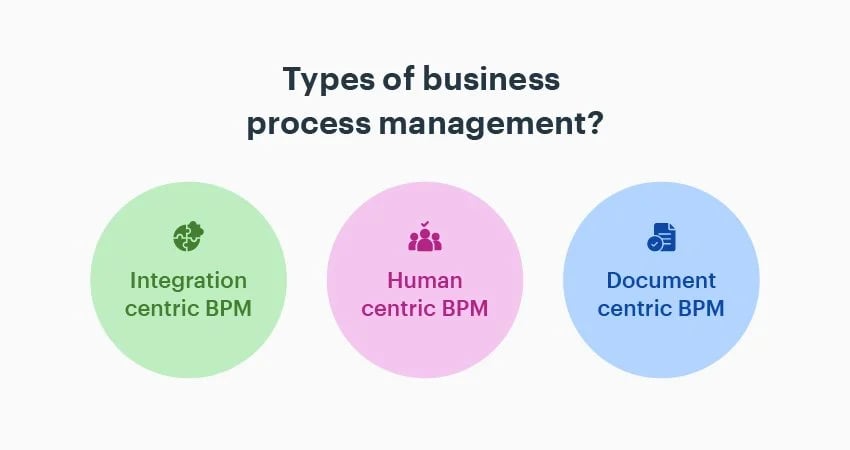Business Process Management (BPM): Definition, Steps, Examples & Benefits
Best Practices in Business Process Management
Several best practices have emerged over time to assist in BPM, which is a complex process improvement strategy. Organizations can follow them to manage their business processes effectively:
1. Define clear goals and objectives
It is important to understand the desired outcomes of a business process and to ensure that the process is aligned with the organization’s overall goals.
2. Involve stakeholders
Involving key stakeholders in the design and management of business processes can help ensure buy-in and support for process improvements.
3. Document and analyze processes
Detailed documentation of business processes can help organizations understand how they work, identify areas for improvement, and track progress over time.
4. Use process modeling techniques
Process modeling techniques such as flowcharts and BPMN can help organizations visualize and understand their processes and identify potential bottlenecks and inefficiencies.
5. Continuously monitor and measure process performance
Organizations should regularly monitor and measure the performance of their business processes and use this data to identify and address any issues or problems.
6. Use technology to automate and optimize processes
Automation and technology can help organizations streamline and optimize their processes, reducing the need for manual labor and improving efficiency.
7. Foster a culture of continuous improvement
Encouraging a culture of continuous improvement can help organizations stay agile and adaptable and ensure that their processes are continuously evolving to meet changing needs.
What are the Benefits of Incorporating Business Process Management?
Here are some of the primary benefits of using BPM in your business:
- Gain control of chaotic and unwieldy processes
- Create, map, analyze, and improve
business processes
- Run everyday operations more efficiently
- Realize bigger organizational goals
- Move toward digital transformation
- Improve and optimize tangled operations
- Closely track individual items as they move through a workflow
What are the Various Types of Business Process Management?

BPM systems can be categorized based on the purpose they serve. Here are the three types of business process management:
1. Integration-centric BPM
This type of business process management system handles processes that primarily jump between your existing systems (e.g. HRMS, CRM, ERP) without much human involvement. Integration-centric business process management systems have extensive connectors and API access to be able to create processes that move fast.
2. Human-centric BPM
Human-centric BPM is for those processes that are primarily executed by humans. These often have a lot of approvals and tasks performed by individuals. These platforms excel at a friendly user interface, easy notifications, and quick tracking.
3. Document-centric BPM
These business process management solutions are required when a document (e.g. a contract or agreement) is at the heart of the process. They enable routing, formatting, verifying, and getting the document signed as the tasks pass along the workflow.
Most business process management systems will be able to incorporate elements of each of these, but each one will usually have one specialty.
Business Process Management Examples
1. HR
Have you ever felt your organization’s onboarding process is too complex and chaotic? Is your HR department asking the candidates to fill out paper forms that make them exhausted? This is because your HR department lacks the principle of Business Process Management (BPM). Applying business process management, helps you automate your HR processes end-to-end, thereby cutting down on cost, time, and paper forms. Here are a couple of examples as to how business process management helps your HR department to improve their processes:
- Approve employee timesheets faster
- Onboard new hires without hassles
-> Here are 6 business process management examples from companies that implemented BPM.















![Toni Kroos là ai? [ sự thật về tiểu sử đầy đủ Toni Kroos ]](https://evbn.org/wp-content/uploads/New-Project-6635-1671934592.jpg)


